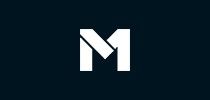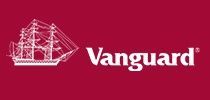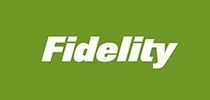It’s easy to forget saving for retirement when you’re too busy paying for the present day. But whether you’re spending money on student loan debt or late-night pizzas, now is the ideal time to set aside money for the future.
A Roth IRA is, in many respects, the best overall retirement plan available. Unlike other retirement plans that provide tax-deferred income, Roth IRAs offer tax-free income. Once you reach 59½ and have been in the plan for five years, distributions taken from the plan are fully tax-free.
To help you select the best option for you, we’ve compiled a list of the top Roth IRA investment accounts that stand out among the competition. Each is either a robo-advisor or has a robo-advisor program available.
What’s Ahead:
- Best Roth IRA investment accounts overview
- Betterment: Best for hands-off investing
- Wealthfront: Best for new Roth IRA investors
- M1: Best for no-fee investing
- Empower: Best for large investments
- Stash: Best for socially responsible investing
- Vanguard: Best for investing in mutual funds
- Acorns: Best for passive saving and investing
- Fidelity: Best for self-directed investing
- E*TRADE: Best for frequent trading
- What is a Roth IRA?
- The difference between a Roth IRA and a 401(k)
- Roth IRA FAQs
- The bottom line
Best Roth IRA investment accounts overview
- Best for hands-off investing: Betterment
- Best for new Roth IRA investors: Wealthfront
- Best for no-fee investing: M1
- Best for large investments: Empower
- Best for socially responsible investing: Stash
- Best for investing in mutual funds: Vanguard
- Best for passive saving and investing: Acorns
- Best for self-directed investing: Fidelity
- Best for frequent trading: E*TRADE
Betterment: Best for hands-off investing
![]()
- Advisory fee: 0.25%
- Minimum initial investment: A $10 minimum required deposit to get started
As a full-blown robo-advisor, and the first of its kind, Betterment is great for those who don’t know much about investing (and have no real interest in learning). All you need to do is fund your account, and Betterment takes it from there.
Betterment creates your portfolio, allocating it between different exchange-traded funds (ETFs). Betterment has features that will rebalance and reinvest dividends for you. Not to mention, they do it all for a very low fee.
There’s a $10 minimum required deposit to get started, and you can open an account and fund it with monthly contributions. It’s an easy diversified investment opportunity.
Pros:
- Automatic investing – Since Betterment manages your Roth IRA, you can invest your money without getting involved in the nitty gritty details.
- $10 minimum initial investment – Whether you have $10,000 or $100 to start your Roth IRA makes no difference. Start with what you can!
- Retirement advice – Betterment offers retirement planning guidance, such as suggested deposit amounts to help you reach your goals, automated tax saving, and more.
Cons:
- Lack of control – Betterment is an automated investment platform and handles 100% of the investing process for you, which may not be ideal if you prefer more control.
- Portfolio divided between stocks and bonds only – Betterment provides a fully diversified portfolio that’s invested in stocks and bonds, but some competitors offer wider investment diversification.
Visit Betterment to learn more or read our full Betterment review.
Wealthfront: Best for new Roth IRA investors
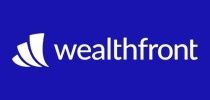
- Advisory fee: 0.25%
- Minimum initial investment: $500
What makes Wealthfront perfect for new Roth IRA investors is the combination of free investment management and a wider than normal investment diversification.
Wealthfront invests your money in U.S. and foreign stocks and bonds (like virtually every other robo-advisor), but they also add real estate, natural resources, and dividend stocks to your portfolio. Since a Roth IRA needs to produce growth and income for decades, these additions are an excellent perk, because each provides its own set of returns. For instance, real estate can perform well even when paper assets don’t, and natural resources can offer protection against inflation.
Wealthfront’s normal advisory fee is 0.25% of your account balance, but there’s a special treat for new investors: your first $5,000 is managed for free. That means if your portfolio produces a 10% gain — $500 — you’ll keep the whole return in your Roth IRA account. It won’t be reduced by the advisory fee. Even after you exceed $5,000, that advisory fee still won’t impact the initial $5,000.
Pros
- Free financial advice and planning – Wealthfront provides a free financial planning service called Path to help customers manage multiple savings goals at once.
- Wide investment diversification – Wealthfront adds additional asset classes to your portfolio that other robo-advisors don’t, including real estate, natural resources, and dividend stocks.
- Customizable investments – Not every robo-advisor allows investors to customize their portfolio, choosing from hundreds of different ETFs — but Wealthfront does!
Cons
- Limited customer service options – If you prefer the assistance of a real human, you may not love that Wealthfront’s customer service center is almost entirely electronic. No in-person advisors. No chat feature.
Visit Wealthfront to learn more or read our full Wealthfront review.
M1: Best for no-fee investing
- Advisory fee: None
- Minimum initial investment: $500 (for retirement accounts specifically)
M1 is a hybrid between a robo-advisor and a traditional brokerage. They offer a simple platform that makes investing easy and painless, while giving you more options than the standard robo-advisor.
The M1 methodology breaks everything down into “pies” and “slices.” Choose from a pre-made pie (i.e., a pre-made diversified portfolio) or add slices (i.e., individual ETFs or stocks) and determine the percentage of your portfolio you want the slices to make up. M1 even allows investors to buy fractional shares, whereas most brokers only allow investors to purchase whole shares.
After you’ve divided your investment, you can set up recurring payments or deposit manually, then let M1’s automated intelligence manage your portfolio in the background. M1’s array of services come with no management or commission fees, so you can squeeze the most out of your retirement savings.
Pros
- Fee-free investing – M1 has absolutely no commission or management fees, so you can keep more of your hard-earned cash.
- Option to customize your portfolio – With M1, you have the option to select a pre-made diversified portfolio or create your own collection of stocks and/or ETFs, both of which M1 manages free of charge.
- Option to purchase fractional shares – Traditional brokers require investors to purchase whole shares, but M1 lets you purchase fractional shares.
Cons
- Limited trading window – M1 is not a trading platform. They prioritize long-term investing and keeping costs low for their customers. Consequently, investors with a basic M1 account can trade only once daily and only in the morning.
Visit M1 to learn more or read our full M1 review.
Empower: Best for large investments
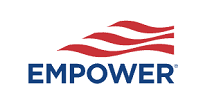
- Advisory fee: 0.89% (for accounts under $1 Million)
- Minimum initial investment: $100,000
Empower is targeting top earners with many — but not all — of their services. If you’re new to retirement planning and want your Roth IRA managed for you, you’ll need a minimum of $100,000 to work with Empower.
Fortunately, Empower also has free services that provide Roth IRA assistance, like their Retirement Planner. You can see how anticipated expenses — like buying a home — will impact your target retirement goal, discover how much your savings will allow you to spend monthly in retirement, and even compare scenarios to see if you can retire early.
If you prefer comprehensive investment management, Empower Investment Services can handle everything from portfolio selection to periodic rebalancing. The advisory fee is higher than robo-advisors, but it’s appropriate for the level of service provided.
Pros
- Free mobile app – Empower’s free mobile app has a Retirement Planner feature that provides advice to help you build and manage your retirement as a self-directed investor.
- Team of advisors – If you opt to open a Roth IRA, you gain access to a team of licensed fiduciary advisors to help you save for retirement.
- Fully integrated investment plan – Empower is in the business of investing, so they provide state-of-the-art digital tools and expert advisors to help you manage all of your investments, including your retirement savings.
Cons
- Expensive retirement management – The annual fee of 0.89% on a portfolio of less than $1 million is nearly triple the fee charged by most robo-advisors.
- Minimum balance of $100,000 – Empower requires a minimum account balance of $100,000, which eliminates most new and small investors.
(Personal Capital is now Empower)
Visit Empower to learn more or read our full review.
Stash: Best for socially responsible investing
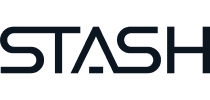
- Advisory fee: $3 to $9 per month
- Minimum initial investment: $1
Stash is different from other robo-advisors in that they don’t actually manage your investment account for you. They design a portfolio based on your risk tolerance and provide recommendations based on your investing profile, but you are responsible for managing the account.
Nevertheless, Stash is still a great starter Roth IRA account, because you can begin with an initial investment of just $1. You can make regular deposits into your Roth IRA account, which are invested in a wide range of stocks, bonds, and ETFs. You can also choose Stash’s “Missions and Causes” investment theme to support socially and environmentally responsible companies.
Stash has two options for monthly plans:
- Stash Growth – The Growth option is $3 per month and includes three investment portfolios (includes a Retirement portfolio), a Stash banking account and debit Stock-Back® Mastercard, and financial advice from expert advisors.
- Stash+ – Stash+ is a little more spendy at $9 per month, but the added perks include two investing portfolios for kids and 1% cash back on your Stash debit card (up to $1,000).
Pros
- $1 minimum investment – Open your Roth IRA account at Stash with as little as $1!
- Expert investment guidance – For anyone who’s unfamiliar with the investing process, Stash is a Registered Investment Advisor (RIA), able to provide expert advice to help you move forward.
- Socially responsible investing – Stash’s investment themes allow you to support companies that are socially and environmentally conscious.
Cons
- Requires hands-on approach – If you’re looking for a fully managed investment account, Stash will not provide this service.
Terms and conditions apply*
Visit Stash to learn more or read our full review.
Vanguard: Best for investing in mutual funds
- Advisory fee: 0.20%
- Minimum initial investment: $3,000
Vanguard is the largest mutual fund provider in the world, and the second largest provider of ETFs. Their funds are so popular and efficient that they are commonly used in robo-advisor platforms. The Vanguard 500 Index Fund Investor Shares (VFINX), for example, is one of the most popular S&P 500 index funds in the world and is a common addition in managed portfolios.
Why Vanguard is so good for a Roth IRA is very similar to Betterment. Thanks to the Vanguard Digital Advisor, you can invest in either an ETF portfolio or an ESG (environmental, social, governance) portfolio and let Vanguard take it from there. Plus, there’s no advisory fee for the first 90 days after opening your account.
Pros
- Mutual fund investing – As the world’s largest provider of mutual funds, Vanguard offers more funds than any other investment brokerage.
- Customer support by phone – Many of the competitors listed in this review are entirely electronic, but Vanguard offers personalized support with an investment professional by phone.
- Low advisory fee – Vanguard features a low advisory fee of 0.20%, compared to the industry average of 0.29%, and for your first 90 days you won’t be charged an advisory fee at all!
Cons
- Not ideal for trading individual securities – Since Vanguard’s focus is mutual funds, their trading fees for individual securities are not competitive with other brokerage platforms.
All investing is subject to risk, including the possible loss of the money you invest.
Vanguard Digital Advisor® services are provided by Vanguard Advisers, Inc. (“VAI”), a federally registered investment advisor. VAI is a subsidiary of VGI and an affiliate of VMC. Neither VAI nor its affiliates guarantee profits or protection from losses.
Vanguard Digital Advisor is an all-digital service. Digital Advisor charges a 0.20% annual gross advisory fee to manage Vanguard Brokerage Accounts for a typical Digital Advisor managed portfolio. The gross advisory fee is reduced by a credit of the actual revenue The Vanguard Group, Inc. ("VGI"), or its affiliates retain from investments in each enrolled account, resulting in a net advisory fee that will be the actual fee collected from your account. A typical Vanguard ETF® portfolio will be credited approximately 0.05%, resulting in a net advisory fee of approximately 0.15%. The actual net fee amount will vary based on your unique asset allocation, account type, and specific holdings in each enrolled account. Note that this fee doesn't include investment expense ratios, but we generally recommend using low-cost Vanguard funds to build your portfolio. For more information on the services, see the Form CRS and the Vanguard Digital Advisor Brochure.
Vanguard Marketing Corporation, Distributor of the Vanguard Funds.
Visit Vanguard to learn more or read our full review.
Acorns: Best for passive saving and investing
- Advisory fee: $3-$5 per month
- Account minimum: $5
Acorns is primarily a micro-savings account — but that’s why it’s so great for new Roth IRA account holders.
Acorns works through a process known as Round Ups. Each time you spend money out of your connected account, it rounds up the payment to an even number and holds the difference. Once at least $5.00 is set aside from roundups, it’s transferred over to your Acorns investment account. You can also sign up for Acorns Checking and get a debit card to help you earn Round Ups in real time, along with interest.
The Acorns investment platform is a robo-advisor, which will handle investment selection and all the management responsibilities for your growing portfolio. All you need to do is spend money, and your Roth IRA account will begin to fill up. Set up your Roth IRA in only two minutes through their IRA program, Acorns Later.
Pros
- Just $5 to start – Acorns has a minimum initial investment of just $5, making it easy for anyone to begin their savings journey.
- Quick signup process – Open an Acorns Later Roth IRA in just two minutes and receive recommendations for investment options immediately.
- Passive investing – Acorns is an investment platform that offers passive savings features through ordinary spending activity. These features can also be applied to your Roth IRA, so you can invest under the radar.
Cons
- Best for spenders, not savers – If you’re capable of saving money on your own, you don’t need Acorns and should consider one of the other more competitive companies in this review.
Visit Acorns to learn more or read our full Acorns review.
Fidelity: Best for self-directed investing
- Advisory fee: No advisory fee under $10,000; with Fidelity Go, it’s $3 per month for accounts between $10,000 and $49,999 and 0.35% advisory fee for accounts with $50,000 or more
- Account minimum: None (you’ll need $10 in your account before Fidelity will manage your funds)
If you’re a self-directed investor looking for a low-cost platform with every type of investment, Fidelity should be on your short list.
Not only can you trade stocks, bonds, and options, but Fidelity is second only to Vanguard in the funds department. They offer the full range of ETFs, and some of the best known mutual funds available. Their fees are high on non-Fidelity funds, at $49.95 per trade, but they offer hundreds of commission-free funds as well.
Fidelity Go offers automated investment management for $3 per month, an annual advisory fee of 0.35%, or no fee at all, depending on your account balance. While their advisory fee for accounts of $50,000 or more is a bit higher than some competitors, Fidelity is a top-rated trading platform with exceptional customer service.
One alternative to Fidelity Go is blooom, a professional retirement management tool that manages Fidelity Roth IRAs. Blooom charges a flat annual fee of $45, $120, or $250, depending on the level of service you want, but their initial analysis is completely free.
Pros
- Wide range of investment options – They offer investing and trading in virtually every type of investment. In fact, they’re second only to Vanguard in the mutual fund category.
- Access to local branches – Fidelity has 24/7 customer service, including more than 100 local branches across the country.
Cons
- High fee for accounts over $50,000 – For accounts of $50,000 or more, Fidelity Go’s advisory fee is above average at 0.35%. If you plan to use a robo-advisor service for even part of your portfolio, consider a cheaper alternative.
Visit Fidelity to learn more or read our full Fidelity review.
E*TRADE: Best for frequent trading
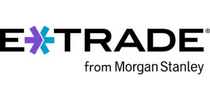
- Advisory fee: Starts at 0.30% (Core Portfolio option)
- Account minimum: Starts at $500 (Core Portfolio option)
E*TRADE is an excellent choice for a Roth IRA, because it’s strong in both self-directed investing and managed portfolios. In fact, they have one of the top trading platforms in the industry.
E*TRADE will work best for:
- frequent traders, due to reduced trading fees on the options side
- fund investors, due to the large number of commission-free ETFs and mutual funds
- options traders
- investors looking to add managed portfolio options to their self-directed investment activity
The basic trading fee for stocks, options, and ETFs is $0 per trade. They also offer commission-free ETFs and no-transaction-fee mutual funds.
E*TRADE has three robo-advisor options:
- Core Portfolios – Basic stock and bond robo-advisor that includes socially responsible and smart beta variations; Minimum investment: $500; Advisory fee: 0.30%
- Blend Portfolios – Actively managed portfolio of ETFs and mutual funds; Minimum investment: $25,000; Advisory fee: starts at 0.90% on first $100,000
- Fixed Income Portfolios – Fully managed, fixed-income portfolio that mixes high-grade corporate bonds with US treasuries for Roth IRA accounts; Minimum investment: $250,000; Advisory fee: starts at 0.45% on first $1 million
Pros
- Three managed investment options – E*TRADE is a full-service broker, providing a range of managed investment options.
- Affordable trading – No monthly or annual IRA fees, $0 trading fees, and a large number of commission-free ETFs and mutual funds.
Cons
- Best for active investors – Although E*TRADE does offer managed portfolios, they cater to frequent traders, and there are alternative robo-advisors who offer more competitive advisory fees for managed investing.
- High advisory fees – Compared to leading competitors, E*TRADE’s advisory fees, ranging from 0.30% to 0.90%, are higher than average.
Visit E*TRADE to learn more or read our full E*TRADE review.
What is a Roth IRA?
In many ways, a Roth IRA is similar to a traditional IRA:
- Both plans have the same contribution limit.
- Both plans allow you to contribute $6,000 per year or $7,000 if you are 50 or older.
- Both plans allow for tax-deferred accumulation of investment income prior to retirement.
- Both are fully self-directed accounts that allow you to choose the trustee that will hold the account, as well as the investments within it.
But when it comes to taxes, traditional and Roth IRAs differ.
- Contributions to traditional IRAs are typically tax-deductible. Roth IRA contributions, on the other hand, are never tax-deductible.
- Distributions taken from a traditional IRA are generally subject to ordinary income tax. Roth IRA distributions, however, are tax-free (as long as you are at least 59½ years old and have participated in the plan for a minimum of five years).
In short, a Roth IRA can provide you with a tax-free income source in retirement — this is the reason they’re so popular.
The difference between a Roth IRA and a 401(k)
While traditional and Roth IRAs differ on the tax front, Roth IRAs and 401(k)s are different when it comes to their contribution limits.
The limit for annual 401(k) contributions is $20,500 for those under 50. Those 50 and older can contribute an additional $6,500 per year.
For Roth IRAs, the maximum annual contribution is $6,000 for those under 50, while those 50 and older can contribute an additional $1,000 for a total of $7,000 per year.
Any individuals earning more than $139,000 per year (or $206,000 for couples) are ineligible to contribute.
For a comprehensive list of differences, here’s a handy table:
| Roth IRA | 401(k) | |
|---|---|---|
| Contributions limits | $6,000, plus a $1,000 “catch-up contribution” if you’re 50 or older ($7,000 total) | $20,500, plus a $6,500 “catch-up contribution” if you’re 50 or older. ($27,000 total) |
| Tax deductibility of contributions | Not tax-deductible | Tax-deductible |
| Employer matching contributions | None available | An employer may match between 50% and 100% of the employee’s contribution |
| Tax treatment in retirement | Distributions can be withdrawn tax-free | Both your contributions and investment earnings are only tax-deferred. You pay income tax when you withdraw |
| Early withdrawals | Contributions can be withdrawn at any time, tax-free and penalty free. Investment income earned subject to income tax and the 10% early withdrawal penalty if taken before age 59 ½ | 10% penalty |
| Loan provision | None | Can borrow up to 50% of the vested value of your plan, up to a maximum of $50,000. Repayment must typically be accomplished within five years |
| Investment options | Self-directed | Restricted to the investment selected by your employer |
| Required Minimum Distributions (RMDs) | Not subject to RMDs | Fully subject to RMDs |
Roth IRA FAQs
Q: Can I open a Roth IRA and another retirement account?
A: Yes! You can contribute to a Roth IRA, 401(k), traditional IRA, and as many other accounts you want — and you should!
But, make sure you understand the different tax rules associated with each. Tax-deferred accounts include 401(k)s, 403bs, traditional IRAs, solo 401(k)s, and SEPs. Post-tax accounts include Roth 401(k)s and Roth IRAs.
Q: Are there income limits to make a Roth IRA contribution?
A: Yes, there are income limits for Roth IRA contributions.
With a traditional IRA, you can still make an IRA contribution, even if you exceed the income limits (your contribution will be either partially or completely nondeductible). But with a Roth IRA, you are not permitted to make a contribution at all once you exceed the income limit (regardless of whether or not you are covered by an employer-sponsored retirement plan).
Here are the income limits for 2022.
Q: What’s a Roth IRA conversion?
A: A Roth IRA conversion is another way to fund your retirement account. Instead of making annual contributions, you take funds from other tax-deferred retirement plans (like traditional IRAs, 401(k) plans, and 403(b) plans) and roll the balances over into a Roth IRA account. One of the biggest advantages of doing a conversion is you can convert a large retirement balance to a Roth IRA quickly.
Q: How do I access money in my Roth IRA?
A: At any time, you can sign in to your account and withdraw your contributions to a Roth penalty-free. It’s the earnings on your investments that you can’t withdraw without getting hit with a 10% penalty.
The penalty on the investment earnings portion of your withdrawal will apply unless you are at least 59½ years old and have had the account for at least five years.
Q: Are Roth IRAs subject to required minimum distributions (RMDs)?
A: According to IRS regulations, virtually all retirement plans are subject to RMDs.
Beginning at age 70½, you must begin taking annual distributions from your retirement plans, based on your life expectancy in each year a distribution is made. The one exception is the Roth IRA. Your Roth IRA can continue accumulating investment income for the rest of your life — literally! This will enable you to avoid outliving your money and leave a larger estate to leave to your loved ones.
The absence of the RMD requirement is a major reason why people do Roth IRA conversions from other retirement plans.
The bottom line
Most people underestimate the amount of income they’ll receive in retirement, particularly since they’ll probably have multiple income sources. The tax-free income feature of a Roth IRA is a great way to avoid unexpectedly high tax liability in retirement.
Featured image: Monster Ztudio/Shutterstock.com
Read more:
Disclaimer - Paid non-client endorsement. See Apple App Store and Google Play reviews. View important disclosures.Investment advisory services offered by Stash Investments LLC, an SEC registered investment adviser. This material has been distributed for informational and educational purposes only, and is not intended as investment, legal, accounting, or tax advice. Investing involves risk.
¹For securities priced over $1,000, purchase of fractional shares start at $0.05.
²Debit Account Services provided by Green Dot Bank, Member FDIC and Stash Visa Debit Card issued by Green Dot Bank, Member FDIC. pursuant to a license from VISA U.S.A. Inc. Investment products and services provided by Stash Investments LLC, not Green Dot Bank, and are Not FDIC Insured, Not Bank Guaranteed, and May Lose Value.” because the article mentions the debit card.
³You’ll also bear the standard fees and expenses reflected in the pricing of the ETFs in your account, plus fees for various ancillary services charged by Stash and the custodian.
⁴Other fees apply to the debit account. Please see Deposit Account Agreement for details.
⁵Stock-Back® is not sponsored or endorsed by Green Dot Bank, Green Dot Corporation, Visa U.S.A, or any of their respective affiliates, and none of the foregoing has any responsibility to fulfill any stock rewards earned through this program. MoneyUnder30 receives cash compensation from Wealthfront Advisers LLC (“Wealthfront Advisers”) for each new client that applies for a Wealthfront Automated Investing Account through our links. This creates an incentive that results in a material conflict of interest. MoneyUnder30 is not a Wealthfront Advisers client, and this is a paid endorsement. More information is available via our links to Wealthfront Advisers.
Empower Personal Wealth, LLC (“EPW”) compensates Webpals Systems S. C LTD for new leads. Webpals Systems S. C LTD is not an investment client of Personal Capital Advisors Corporation or Empower Advisory Group, LLC.
*Terms and conditions apply – Stash legal disclosures
This material is not intended as investment advice and is not meant to suggest that any securities are suitable investments for any particular investor. Investment advice is only provided to Stash customers. All investments are subject to risk and may lose value.
¹ Stash does not monitor whether a customer is eligible for a particular type of IRA, or a tax deduction, or if a reduced contribution limit applies to a customer. These are based on a customer’s individual circumstances. You should consult with a tax advisor.
²For Securities priced over $1,000, purchase of fractional shares starts at $0.05.
³The Monthly Wrap Fee starts at $1.00 and you’ll also bear the standard fees and expenses reflected in the pricing of the ETFs in your account, plus fees for various ancillary services charged by Stash.
⁴The adult (or Custodian) who opens the account can manage the money and investments until the minor reaches the “age of majority.” That age is usually 18 or 21, depending on the Custodian’s state. The money in a custodial account is the property of the minor. Money in a custodial account can be used by the parent or legal guardian, but only to do things that benefit the child.
⁵Promotion is subject to terms and conditions.
⁶Before investing in any exchange-traded fund, consider your investment objectives, risks, charges, and expenses.
Money Under 30 is a paid Affiliate/partner of Stash. Investment advisory services offered by Stash Investments LLC, an SEC-registered investment adviser.


